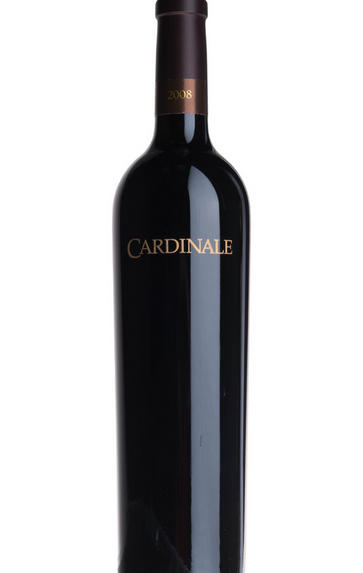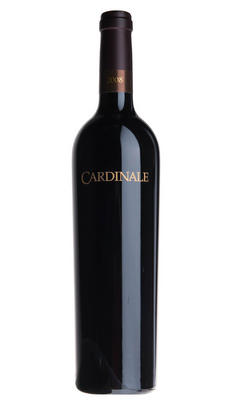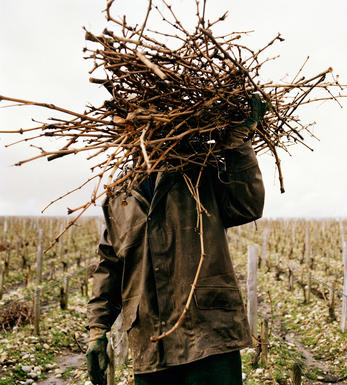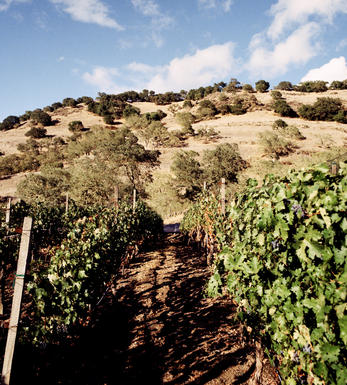
2008 Cardinale, Napa Valley, California, USA

Critics reviews
Here is a case where the 2008 is slightly superior to the 2007 (rated 94). From Jess Jackson’s viticultural empire, this wine, made by Chris Carpenter, is essentially a selection of some of the best lots of grapes from six separate Napa Valley regions, including Veeder Peak, Keyes Vineyard on Howell Mountain, Spring Mountain, Diamond Mountain, the To-Kalon Vineyard in Oakville and the Andrew Geoffery Vineyard.
(Robert Parker - Wine Advocate #192 - Dec 2010)
About this WINE

Cardinale Estate
Jess Jackson’s & Christopher Carpenter's acclaimed viticultural venture, Cardinal, makes wine from a selection of diverse Napa Valley regions, including Veeder Peak, Keyes Vineyard on Howell Mountain, Spring Mountain, Diamond Mountain, the To-Kalon Vineyard in Oakville and the Andrew Geoffery Vineyard. All are situated in the Mayacamas and Vaca mountain ranges surrounding the Napa Valley.
Cardinale creates a single wine from each vintage. The wine is a limited production Cabernet Sauvignon-based blend. Made from select lots of low-yielding vines, pressing is done in traditional basket presses, with the young wine placed into 100% new, tightly grained, French Chateau styled oak barrels for extensive aging.

Napa Valley
North Coast's Napa Valley is California's most famous viticultural area (AVA), claiming some of the most expensive agricultural land in the world and producing wines of ‘cult’ status.
Its 16,000 ha of vines lie over a strip (40 miles long-5 miles wide) of diverse soils (clay, gravely, volcanic), with its northernmost end on the side of Mountain Helena and its foot in San Francisco Bay. The valley is framed by two mountains ranges Vaca (to the north) and Mayacamas (to the south), yet the main climatic influence is the cool wind and fog that is sucked in from San Pablo Bay during the afternoon, allowing grapes to ripen slowly and evenly.
The area enjoys a variety of unique microclimates, as temperatures can vary dramatically as much as 15 degrees, from the north to the south end of the valley. These differences have led to the creation of several sub-AVAs (14 in total) including:
Atlas Peak, Chiles Valley District, Diamond Mountain District, Howell Mountain, Los Carneros, Mt. Veeder, Oakville, Rutherford, St. Helena, Spring Mountain District, Stags Leap District, Yountville, Wild Horse Valley and Oak Knoll District. The Calistoga AVA is still pending approval.
Both the “Napa Valley” designation and the sub-AVA name must appear on the wine label simultaneously, with the exception of wines from the Carneros AVA, which is shared between the Napa Valley and the Sonoma County.
Cabernet Sauvignon is the undisputed king of Napa grapes, occupying over 45% of the vineyard acreage, followed by (predominantly) Chardonnay, Sauvignon Blanc, Chenin Blanc, Riesling, Zinfandel, Merlot, Cab. Franc and to a lesser extent Petite Sirah, Sangiovese, Barbera, Dolcetto.
Recommended Producers
Frog's Leap, Dominus, David Ramey, Viader, Stag's Leap Cellars, Paras Vineyards, Heitz.

Cabernet Sauvignon Blend
Cabernet Sauvignon lends itself particularly well in blends with Merlot. This is actually the archetypal Bordeaux blend, though in different proportions in the sub-regions and sometimes topped up with Cabernet Franc, Malbec, and Petit Verdot.
In the Médoc and Graves the percentage of Cabernet Sauvignon in the blend can range from 95% (Mouton-Rothschild) to as low as 40%. It is particularly suited to the dry, warm, free- draining, gravel-rich soils and is responsible for the redolent cassis characteristics as well as the depth of colour, tannic structure and pronounced acidity of Médoc wines. However 100% Cabernet Sauvignon wines can be slightly hollow-tasting in the middle palate and Merlot with its generous, fleshy fruit flavours acts as a perfect foil by filling in this cavity.
In St-Emilion and Pomerol, the blends are Merlot dominated as Cabernet Sauvignon can struggle to ripen there - when it is included, it adds structure and body to the wine. Sassicaia is the most famous Bordeaux blend in Italy and has spawned many imitations, whereby the blend is now firmly established in the New World and particularly in California and Australia.


Buying options
Add to wishlist
Description
Over 1,000 cases of the 2008 Cardinale were made from a blend of 91% Cabernet Sauvignon, and 8% Merlot. Interestingly, the To-Kalon portion is the only fruit source located on the valley floor, which is not surprising given Jess Jackson’s propensity to buy, plant and source fruit from high elevation hillside and mountain sites. The 2008 exhibits a dense purple color along with sweet kirsch, unsmoked cigar tobacco, toasty oak and black currant characteristics. The wine hits the palate with a resounding opulence, full-bodied richness, moderate, sweet, well-integrated tannins and a long, heady finish. There is a floral component in the 2008 that was not noticeable in the 2007. This beautiful, full-bodied wine was aged 21 months in 100% new French oak. Slightly more evolved than the 2007, the 2008 should last for 20-25+ years.
Here is a case where the 2008 is slightly superior to the 2007 (rated 94). From Jess Jackson’s viticultural empire, this wine, made by Chris Carpenter, is essentially a selection of some of the best lots of grapes from six separate Napa Valley regions, including Veeder Peak, Keyes Vineyard on Howell Mountain, Spring Mountain, Diamond Mountain, the To-Kalon Vineyard in Oakville and the Andrew Geoffery Vineyard.
Robert Parker - Wine Advocate #192 - Dec 2010
wine at a glance
Delivery and quality guarantee